Tag: Bodybuilding
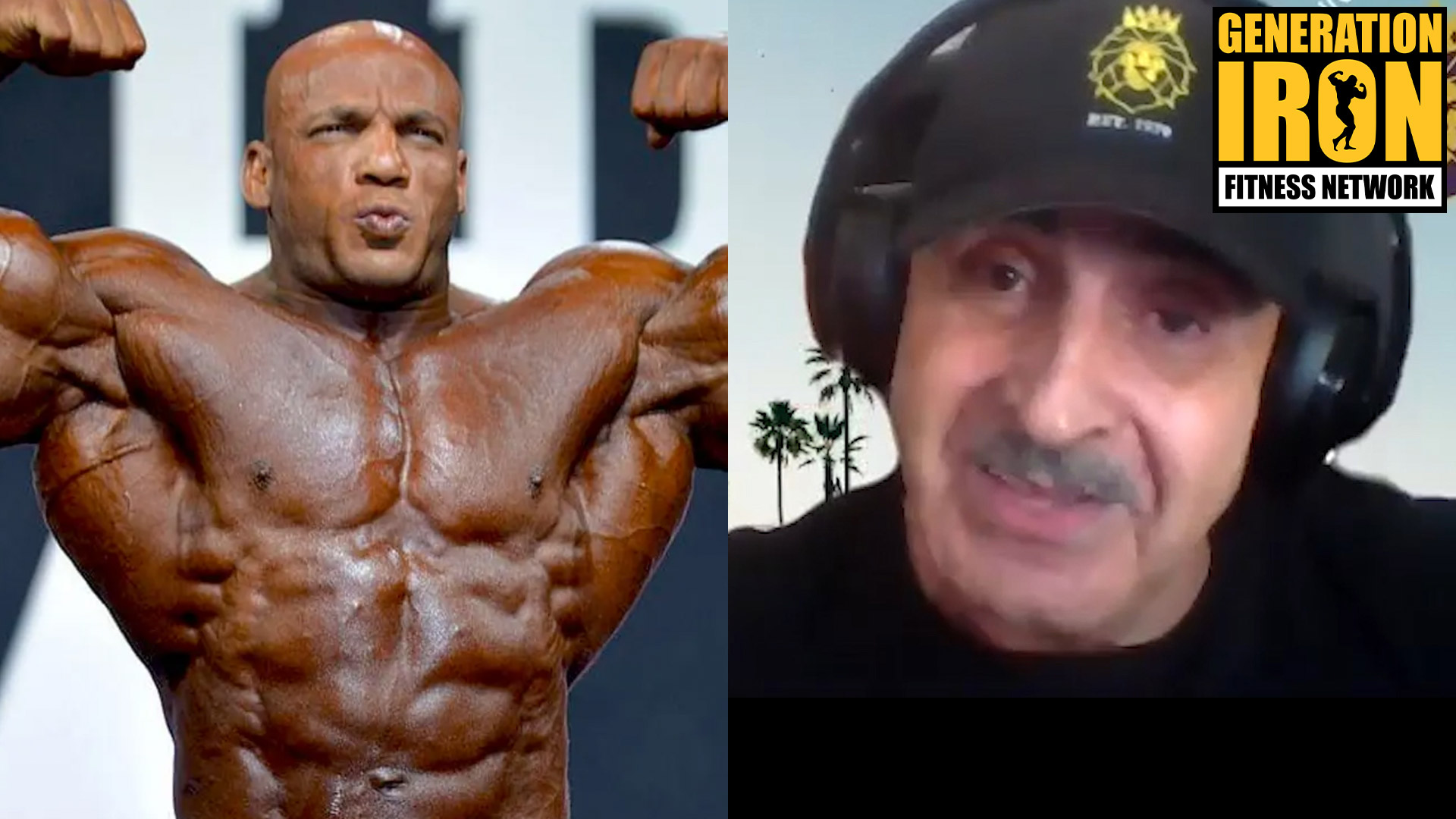
Samir Bannout’s Critical Analysis Of Big Ramy’s Olympia 2020 Physique
[embedded content]
Samir Bannout reacts to Big Ramy’s physique at the Mr. Olympia 2020.
Samir Bannout is a legend in the world of bodybuilding. A competitor with an incredible physique, he eventually solidified his status by becoming Mr. Olympia in 1983. With an incredible reputation and successful pedigree, we decided to ask Bannout about his thoughts on the Mr. Olympia 2020. More specifically, his reaction to Big Ramy’s physique and big win. In our latest GI Exclusive interview, Samir Bannout critiques Big Ramy’s Olympia-winning physique.
After many years of ups and downs, Big Ramy finally won the Mr. Olympia in 2020. It was quite a rollercoaster of a journey – with some fans unsure if he was ever going to actually pull it off. Then everything clicked and Big Ramy showcased one of the greatest physiques of his career. It earned him the title of Mr. Olympia 2021.
True to his name, Big Ramy represents the modern look of pro bodybuilding. He has incredibly massive size – sometimes weighing close to 300 pounds on stage. This size had always been a push-pull aspect of his success. His mass monster look was reminiscent of Ronnie Coleman – but it also took away from his conditioning. This ultimately put him on a path of falling short at the Olympia for nearly a decade.
Samir Bannout recognizes this when analyzing Big Ramy’s latest showing that earned him the gold. According to Bannout, Ramy had so much massive size on him – that he was easily able to take off some points to work on conditioning without losing his freak factor. In fact, this is the element that Bannout believes was off all these years. Ramy didn’t have the confidence, or perhaps the guidance, to cut off some weight.
Samir Bannout has been watching Big Ramy’s career from the start. He’s even, in fact, had some one on one conversations with Ramy throughout the years. From what Bannout can gather, there was some element of disconnect between Ramy’s talent and his training in Kuwait.
There’s no denying that the Oxygen Gym crew can help transform bodybuilders into mass monsters worth noting. Brandon Curry struggled through his mid-career only to completely change gears upon moving to Kuwait. He eventually won the Mr. Olympia title for himself in 2019. The training in Kuwait helped Big Ramy in this way too – but when it came to the finish line – something was off.
“I think Ramy with his coach was saying… that they are going back to the old school way with Big Ramy,” Samir Bannout states in our interview. “When Ramy was in Kuwait, he was trying very hard with the Camel Crew and sometimes they weren’t on the same page.”
Samir Bannout goes on to say that trainers and coaches are not solely responsible for Big Ramy’s success or failure. Bannout praises Big Ramy’s work ethic and heart for the sport.
“Everybody wants to get the credit… but come on, Ramy is working very hard.” Bannout continues to say in our conversation. “All he needs is the minor tweaking to make him pop.”
There is no one right way to win a Mr. Olympia show. The road to success is different for each individual. Big Ramy simply took some time to find what works best for him. In 2020, Samir Bannout saw a bodybuilder in complete form. His size and conditioning finally met in the middle for a superior physique.
You can watch Samir Bannout’s full comments and analysis of Big Ramy in our latest GI Exclusive interview segment above!
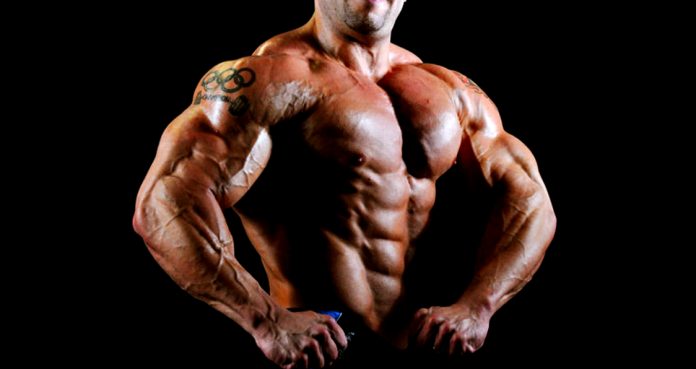
Five Crucial Tips For Aspiring Bodybuilders
Solid tips for any aspiring bodybuilder.
IFBB Pro and World record-holding powerlifter Amit Sapir has recently discovered a penchant for sharing information over the internet. This weekend he offered up five crucial tips for young and aspiring bodybuilders.
First off, he explains that more is not always better. Amit recommends that bodybuilders stay as lean as possible, even in the off season:
“Staying lean will help with insulin sensitivity, general health, and will keep you disciplined and focused on making the right food choices to help you grow.”
He also says that in this age of equipment and advanced supplementation, learning to use one’s body before specialized products is critical:
“Take the minimum amount of supplements you need to grow. Do that and you will be one step ahead of everyone else at all times, as you will always have a new card to pull from up your sleeve. Your body is the best machine you will ever have, trust it and do the work!”
Second, he says:
“Get Strong While You’re Still Young.
“I cannot put into words how much I miss the days when my body allowed me to squat almost daily, to deadlift three times a week, and to bench or overhead press every day and still get bigger and stronger.”
According to Amit, heavy compound movements form the basis for most excellent mature physiques. Of course form and prudence are important, but youth is the essential time when a lifter can push himself.
Third: Sapir says to set smaller objectives on the path to your grand goal. For him, that final end was the Olympia stage. However, like all experienced athletes, Amit knows that the real challenge is in the daily grind.
“All those workouts I did when everyone else was partying, the cardio I did in the rain for months, working with my clients and trying to smile to them while I am starving and cranky from the diet. Every single one of those was a little goal and a small win that I got daily.”
He says that setting concrete objectives for various time periods is critical to stay accountable and feel the urgency of a deadline.
“Your yearly goals should be winning small shows. After you have your yearly goals in place, break them into the daily, weekly, and monthly steps that are needed for making this goal into reality.”
Fourth, Amit says to accept the inevitability of some failure.
In his second pro show, Amit finished dead last. That failure crushed him, but it made him work smarter and harder for his next show, from which he qualified for the Olympia.
“As long as you are ok with it, then your dream will stay alive. Failure does not mean the end. Quitting does.”
Finally, Amit says to Keep Your Day Job:
“Hope for the best but prepare for the worst.
“I’ve seen people risking and losing every dollar they have and ending up in the hospital with no money to pay for the doctor bill. Dream big, but be smart, and take into consideration the worst case scenario.”
And lastly, Amit says that ultimately, life is bigger than bodybuilding:
“Spend time with loved ones…Trust me, in the end, they are more important than any pro card or a victory.”
For more news and updates, follow Generation Iron on Facebook, Twitter, and Instagram.
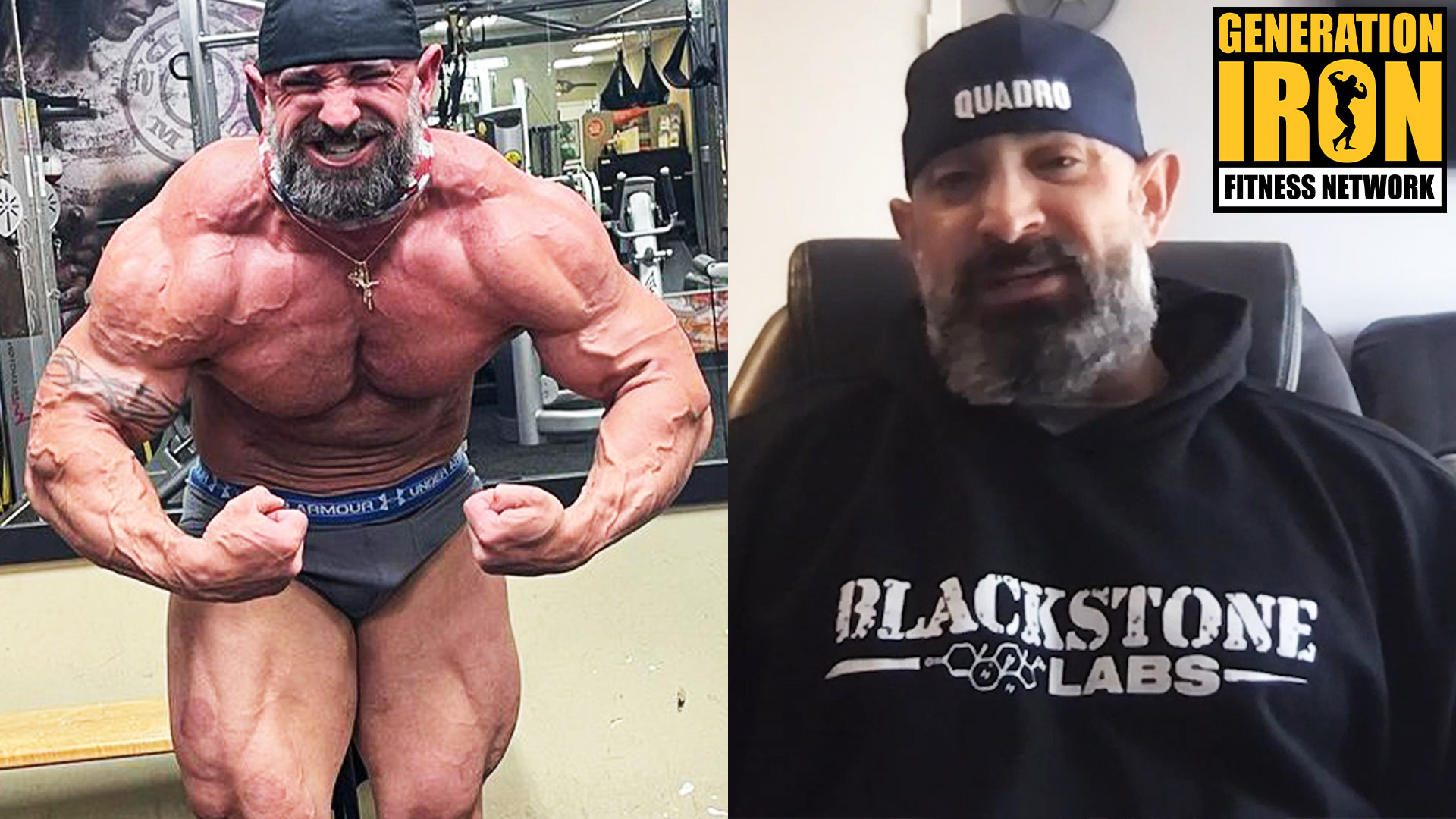
Guy Cisternino: Bodybuilding Today Needs More Intensity
[embedded content]
Guy Cisternino talks about his bad luck in 2020 and how he wishes young bodybuilders today had more intensity.
It’s an understatement to say that 2020 was a bad year. That’s especially true for Guy Cisternino – but in a way that you might not expect. Beyond the quarantine, Cisternino had a string of bizarre bad luck that made his 2020 bodybuilding career disappointing to himself. But he doesn’t let him get too down so long as he can still train in the gym and help inspire the younger generation of bodybuilders.
But as he faces a new generation coming up in the ranks, he does have one wish for the future of bodybuilding. He wants there to be more young bodybuilders that exhibit the kind of training intensity he brings into the gym. Bodybuilders like Ronnie Coleman, Branch Warren, and Guy Cisternino are becoming a dying breed. According to Cisternino, there just aren’t that many bodybuilders who go truly hardcore in the gym. This goes beyond physique quality. It’s simply a mental attitude that Cisternino personally prefers. In our latest GI Exclusive interview, Guy Cisternino details his hopes for a new crop of bodybuilders that bring intensity back to the sport.
Nick Walker is one of the biggest standout young bodybuilders coming into the pro league today. There’s no doubting that he has a massive frame and the promise to be a threatening competitor ranking in the top spots of competitions. Guy Cisternino has no doubt of that either. But what he’s noticed is that Walker is so powerful – that he can lift heavy weight with ease. He puts up a massive bench press without making a sound.
While this doesn’t affect Nick Walker’s physique at the end of the day – it does find Cisternino longing for an older era of bodybuilding. Guy Cisternino is similar to bodybuilders like Branch Warren. When he trains in the gym – he goes extremely intense and hardcore. Yelling, loud noises, and bursts of intensity are common. That’s because he puts every ounce of himself into ever rep.
While there is certainly some correlation between intensity in training and effectiveness of your workouts – it’s not necessary to scream in the gym to be a talented bodybuilder. Ultimately, Cisternino is not criticizing the younger generation for problems with the quality of their physique. Instead, he’s simply lamenting a dying breed of personality in the sport. The kind of personality that partially made him love bodybuilding in the first place.
“A part of me just hopes that, man, maybe a couple of these kids will just carry that intensity on because I just don’t see it that often,” Guy Cisternino states in our interview. He continues:
“I think bodybuilding needs some intensity sometimes. I think you need guys like Dorian, like Ronnie, like Branch, like Kai, like me, like Flex, like Jose Raymond. I think you need that, you know? I think it makes it a little more fun.”
At the end of the day bodybuilding is a sport. But you’d be a fool to think that part of what makes sports great is the culture behind them. For Guy Cisternino, that hardcore intensity is what made him love the sport to a large degree. As he gets older and as he sees that intensity slowly fall to the wayside – he misses it.
You can watch Guy Cisternino go into full detail about the new generation of bodybuilding and intensity within the sport by watching our latest GI Exclusive interview above!
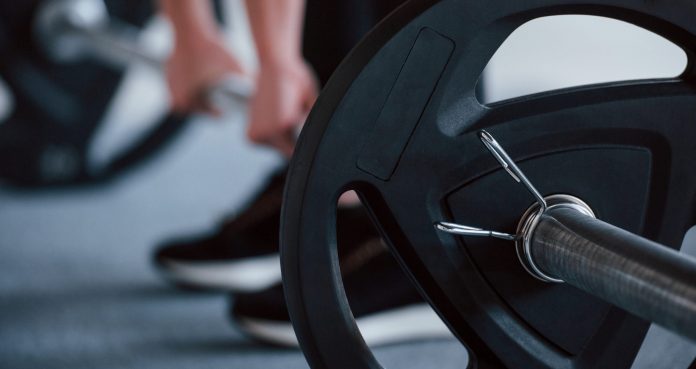
Best Barbell Workouts For Versatility & Optimal Growth
Barbells are perfect for enhancing exercise performance and aiding in competition and serve as a versatile and effective piece of exercise equipment for great gains.
Barbells can be seriously effective when looking to enhance strength and performance and can be used for a variety of exercises to offer great benefits to keep you healthy and fit. While we often associate barbells as tools for those big lifts, there are many isolated exercises that simply use the barbell. When looking to build a stellar home gym, consider looking into barbells in order to effectively maximize all of your gains and really add diversity to your at home workouts.
Barbells can help build functional strength for people looking to gain muscle mass while also enhancing overall strength. A good, quality barbell workout can tear down muscle in order to rebuild that muscle tissue in a safer, more effective manner. This is where a good protein supplement would come into play, for they can pump you with vital nutrients like BCAAs to stimulate protein synthesis and aid in that much needed recovery and recuperation.
Unlike some more complicated equipment that requires some tutorial which you just don’t have time for, barbells are easy to use, versatile by nature, and can really work to perfect lifting techniques so you can tackle any of those big lifts, like the big three powerlifting exercises being the squat, bench press, and deadlift. The ability to add more resistance can increase time under tension and lead to deeper muscles being worked that often times get overlooked, seriously enhancing all aspects of your growth and maximizing total performance. This makes the barbell worthwhile for all your bodybuilding goals.
The benefits of barbell training should not be overlooked and these top barbell workouts will surely convince you to incorporate barbells into your training, if you don’t already. Let’s dive more into barbells and see what all this hype is about.
Benefits Of Barbell Training
Barbells are great for offering full body workouts to see enhanced growth and size, while also aiding in functional movements and working to improve range of motion, flexibility, and ultimately, more solid mobility. Mobility comes from both flexibility and stability, also referred to as strength, and is important for all sorts of athletic performance as you look to advance in your goals (1). Since barbells work to really improve mobility, barbell training has become a great way to get the edge up on all your competitors.
The benefits of barbell training include:
Versatility: With the ability to build both strength and cardio, barbells offer just the right amount of weight to work your muscles to increase mass and size, while also allowing more quicker movements to be performed without a serious overload.
Improve athletic performance: A great full body workout, any exercise performed with a barbell will work to promote better training and competitive performance. Barbells are perfect for building better mind muscle connection in efforts to work on technique and better muscular focus (2).
Convenient: Barbell training allows you to perform an entire workout by simply using one piece of equipment. Instead of constant changes to prolong your workout, barbell training can be quick and convenient, while also still very effective.
Promote better cognitive function: Barbell training, like most all training, can really work to boost your confidence and mood in knowing you are bettering yourself and seeing great gains (3). Other benefits like productivity and better sleeping habits also come from barbell training.
Top Barbell Workouts For Maximum Growth
Landmine Rainbow
The landmine rainbow is a great core exercise to really fire up those abs and start to see that shredded physique. Through various twists and turns, you work your core by moving your arms in an arc while maintaining good form through your spine.
How to: Place one end of the barbell on the ground, preferably in a stand for added support. Hold the other end at around eye-level and twist the barbell with your arms, keeping your body as straight as possible. Alternate sides and perform for desired number of reps.
Zercher Squat
The Zercher squat may look similar to a front squat but the grip and bar placement are different, really working to target your core as well. It is important to stay as tall as possible to avoid any unwanted pain and injury.
How to: Place the bar in the pit of your elbow and maintain a solid core. With your feet spread slightly at around shoulder width apart, drive down into a squat, keeping a neutral spine. Push through your heels and return to the top.
Overhead Press
The overhead press is a mean shoulder workout to really round out your upper body. This will not only increase shoulder strength but also helps maintain proper muscular balance. This can be done seated or standing (4).
How to: Place your hands slightly more than shoulder width apart on the bar. With the bar at ear-level, drive it over your head, extending your arms. Gently lower back down and repeat for your desired number of reps.
Upright Row
The upright row is great for shoulders and traps while also engaging your biceps and back. This is a great exercise for toning and getting those mountains for traps that you’d love to have. Feel free to add weight as well if you’re comfortable.
How to: Using an overhand grip, place your hands at around shoulder width apart. With the bar close to your body, raise your elbows so they are parallel to the ground and the bar at about chin height. With a controlled motion, lower back down to the starting position.
Wrap Up
Barbell training is a great way to see awesome growth in your muscles while also aiding in functional movements to support any big lifts, complex exercises, or competitive performance. The perfect at home tool for training, barbells are convenient, versatile, and affordable, making this a much sought after piece of workout equipment. Check out barbells and the benefits they can offer you and really work to see that desired growth really come to life.
Let us know what you think in the comments below. Also, be sure to follow Generation Iron on Facebook, Twitter, and Instagram.
*Images courtesy of Envato
References
Haley, Jimmy. “The Importance of Flexibility and Mobility”. (source)
Lucero, Rhys AJ.; Fry, Andrew C.; LeRoux, Christopher D. (2019). “Relationships between barbell squat strength and weightlifting performance”. (source)
Cassilhas, Ricardo C.; Viana, Valter A. R.; Grassmann, Viviane; et al. (2007). “The Impact of Resistance Exercise on the Cognitive Function of the Elderly”. (source)
Waller, Mike; Piper, Tim; Miller, Jason (2009). “Overhead Pressing Power/Strength Movements”. (source)
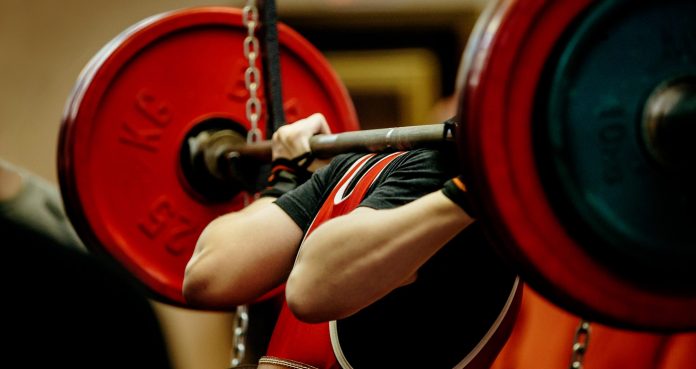
High Bar Vs. Low Bar Squat: Which One Is More Effective For Training?
These two squatting techniques are used by athletes for gains, but each provides different movement mechanics and the transfer of forces to get work done.
Squats are an exercise that anyone of all levels can enjoy from beginners, to those more intermediate, all the up to more experienced lifters. As a great lower body exercise, squats are perfect for seeing serious growth in your legs while also benefiting explosive power and that added level of dynamic movement to aid in any workout, training session, or competitive performance. With many variations of squats and a host of equipment to use, back squats are especially great for enhancing those gains.
The importance of good technique is something to take note of in order to both maximize strength and size while also preventing any unwanted injury that may put you out of your training cycle. Knowing the difference between a high bar squat and low bar squat is something to really take note of because while they will both help with squatting form for optimal growth, they differ in their respective movement mechanics and the transfer of forces done during the exercise.
As a slight side note, when it comes to squatting, balance and stability are more than important, especially considering the amount of weight put on your back. Being able to maintain a good, solid posture will allow you to push yourself to new heights and really enhance all aspects of your lift. By combining flexibility with stability, also referred to as strength, you really get the chance to increase overall mobility and work to enhance your range of motion (1). The benefits of squats is that you are actively working on this while also promoting it for your overall physical health.
The differences in the high bar versus low bar squat lie in the foot placement, hips, chest angle, and hand placement and vary slightly to target different muscles and movements. Let’s dive into these differences and see which squat is most effective when it comes to your training and performance.
What Is A High Bar Squat?
The high bar squat is where the bar is placed high on your upper back, typically on the trapezius muscle that goes across the top of the shoulders. Your hands are placed wider towards the plates and your feet are around shoulder width apart. Since the bar is placed higher on your back, it is important to stay over the midfoot as much as possible and your back may be slightly straighter than with a low bar squat.
Benefits Of A High Bar Squat
This is seen as the traditional way of squatting and puts you more in that conventional athletic stance. A high bar squat will really work your quads and you will start to see great growth and strength adding more explosive power and a more solid stance when it comes to other activity (2). Placing less stress on your back allows for more balance and your ankles will develop more mobility in order to keep you upright, especially since your upper body is more straight than a low bar squat.
What About A Low Bar Squat?
A low bar squat is where the bar is placed on the upper back as well, but lower than the high bar squat. This would typically rest on your posterior deltoid as opposed to the top of your shoulders. Your hands will be slightly closer together and your feet shoulder width apart, although they will splay out slightly as opposed to keeping your toes directly in front of you. With the bar slightly lower on your back, you will have a slightly more forward lean to maintain a more solid form.
Benefits Of A Lower Bar Squat
Low bar squats are used for a couple of reasons, but the main ones being moving more weight and increasing the load on your back to really see solid development. Since your hips are forced to move back, you can load more on your back and will be able to absorb and produce better force (3). It is slightly easier to lift more weight and is great for developing strength. This style of squatting can really develop the glutes, hamstrings, and back extensors since they require more activation than the quads.
Which Placement Is More Effective?
Each of these squatting placements have their respective benefits and it all comes down to your performance goals and what you are looking to achieve from each. If you seek strength, maybe look more towards the low bar squat since you can add more weight onto that bar and really feel the effects of an increased load. For hamstring, glute, and back growth, a low bar squat may be just what you need to increase that one rep max or just build up sheer strength.
The high bar squat will translate over nicely into other power exercises and can really work on that quad growth. Knowing just what to do when it comes to supporting lower body building is great and the high bar squat will see a more traditional squat to aid in your athletic stance regardless of your respective sport. It is ultimately up to you, your goals, and your comfort level when it comes to squatting. With so much of the weight on your back, without the proper strength and form, that load can lead to unwanted pain and injury. Knowing your limits is key but being able to push those limits is equally as important.
Wrap Up
Squatting is an essential exercise for lifters and athletes of all kind to not only see growth, but also aid in functional movements that can really increase our work capacity. The high bar squat versus the low bar squat are two placements that may differ in movement and a transfer of force but can also be more than beneficial when it comes to lower body gains. Decide on what your goals are and really work to see a huge change in strength and power with these two squatting techniques.
Let us know what you think in the comments below. Also, be sure to follow Generation Iron on Facebook, Twitter, and Instagram.
*Images courtesy of Envato
References
Haley, Jimmy. “The Importance of Flexibility and Mobility”. (source)
Glassbrook, Daniel J.; Brown, Scott R.; Helms, Eric R.; Duncan, Scott; Storey, Adam G. (2019). “The High-Bar and Low-Bar Back-Squats: A Biomechanical Analysis”. (source)
Murawa, Michal; Fryzowicz, Anna; Kabacinski, Jaroslaw; Jurga, Jakub; Gorwa, Joanna; Galli, Manuela; Zago, Matteo (2020). “Muscle activation varies between high-bar and low-bar back squat”. (source)

INSANE BODYBUILDING GENETICS! The Most Jacked and Shredded Father and Son Duo We’ve Seen!
In honor of Father’s Day, we are re-running this story about bodybuilding father and son duo who caught eyes on stage in the Canadian Nationals.
Genetics. They play a major role in how one’s physique can be molded and shaped. Some individuals have crazy back genetics that allow them to get their lats to explode with muscle. Others have crazy arm genetics, bicep and tricep insertions going above and beyond what we thought was humanly possible. Then there are those who have overall superior genetics allowing them to mold their bodies to insanely jacked and shredded forms.
When an individual has some impressive genetics, sometimes they’re able to pass those same gifts onto the next generation. This certainly seems to be the case in regards to Jesse and Denis LeBlanc.
A certified personal trainer, Jesse LeBlanc has been able to shape the bodies of his clients into healthy and strong figures of peak human athleticism. Jesse LeBlanc has utilized that same knowledge and passion for transforming his clients into shaping his own physique as well, leading to numerous competitive bodybuilding titles in the process. But while Jesse may have put in the hard work to transform himself, we have to consider that his superior genetics helped him along the way.
Enter Denis LeBlanc.
A fitness enthusiast himself, Jesse’s father Denis has cut out a powerful and strong form of his own, looking extremely jacked and shredded even in his early fifties. The father and son duo got the chance to show off their hard work and superior genetics on stage when they competed in a bodybuilding show together at last year’s Canadian Nationals. Suffice it to say, both LeBlanc men looked impressive as they stepped on stage.
Jesse and Denis LeBlanc not only have a bond through blood, but also their passion for fitness.
What do you think of this father-son duo?
For more news and updates, follow Generation Iron on Facebook, Twitter, and Instagram.
Jacob Ladon is a staff writer and former amateur bodybuilder. He has been passionate about bodybuilding since he was 15 years old and discovered the joys of training in the gym. He reports and comments on all bodybuilding related matters.
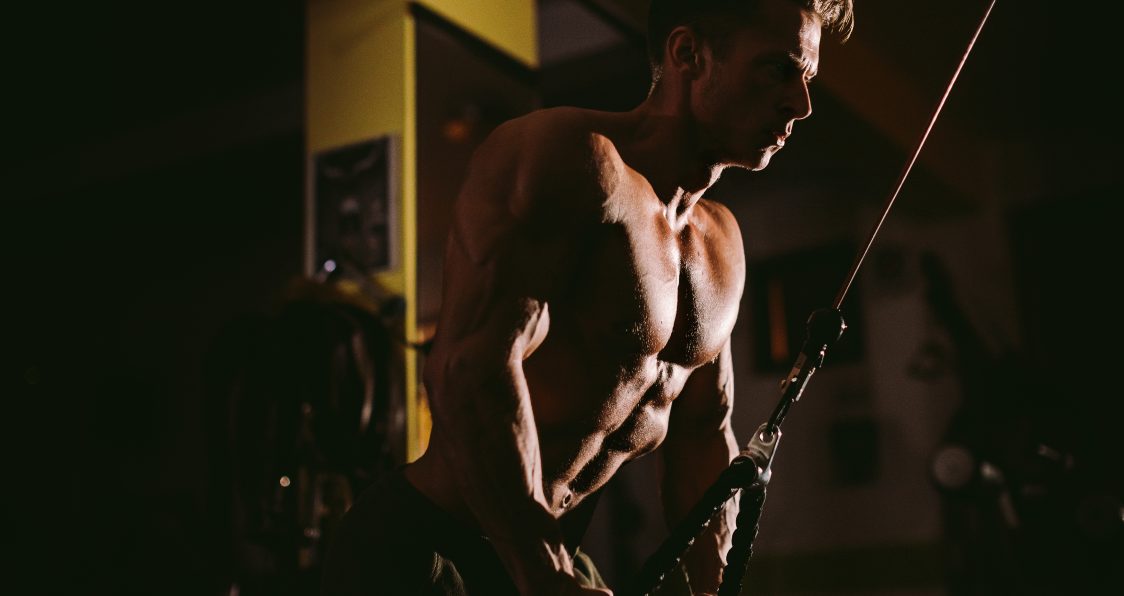
Best Muscle Group Training Combos For Bodybuilding
Know the right combination of muscles to train to ensure your bodybuilding gains are met and really work to get the most out of every workout.
Instead of wandering around the gym with no plan in mind, it is important for you to know what works best to maximize the full potential of your growth with your muscle groups. While ripping a quick set of bicep curls, hopping on the bench for a few decent reps, and hitting a body weight squat circuit might make you feel good, you won’t be actually benefiting your overall performance or individual muscle groups or any major muscle group, as well as smaller muscle groups, to make sure to see growth in your training.
To start seeing the success of muscle building depends on training the right muscles, at the right time, and with other muscle groups that aid in such growth. Pairing muscle groups that compliment each other will activate more muscle fibers and allow for more muscle in your workouts for maximum muscle group training for all muscle groups and sheer volume.
Work Those Stabilizer Muscles Out For Support
It is important to note that very few exercises truly target just one muscle, whereas many target different muscle groups. Although a major muscle may be the intended target, smaller ones surrounding it also benefits and provide support and act as stabilizers for the larger muscles. By combining certain muscle groups together that complement each other, you increase muscle mass, bone health, and begin that path to your desired physique. Working on the wrong muscle group together won’t totally destroy all gains, but you will not fully maximize the potential of your hard work put into the gym from all muscle groups.
The Benefits Of Combining Muscle Groups For Serious Growth & Performance
The bonus of combining certain groups is to work like-minded muscles with complimentary movements. A day off of recovery for that muscle group will allow the muscle to recharge to better target muscle growth. Compound exercises are those that involve more than one group of muscles and can increase efficiency, muscle mass, and weight loss.
However, if you want to start to strengthen muscle groups over the other, exercises performed in the beginning of the workout led to greater gains than those completed at the end (1).
Fatigue plays a role for those muscles worked at the beginning are fresher and more willing to lift more weight for muscle group training and intensity.
These muscle group combinations ensure you see big gains without sacrificing your overall health so as to not waste your time in the gym and be as effective as possible with all muscle groups. A simple change in your existing workout plan can go a long way in terms of benefits and gains for muscle group training with added intensity. Getting enough resistance from enough intensity quickly can ensure safe lifting for weeks and months as you build up enough muscle.
Chest, Shoulders and Triceps For Pushing Motions
The chest and triceps work together in most pushing motions that originate from the shoulders, so combining the three is the best choice. By keeping all three activated in the workout, the possibility for growth is undeniable and unavoidable, especially with great chest exercises, and even in the triceps and shoulders. While the bench will see greater muscle hypertrophy in your chest than the triceps (2), it’s important to recognize that both the triceps and shoulders still benefit from said exercise as opposed to just one muscle group or just one singular major muscle group or body part, as well as other smaller muscle groups incorporated in your training program for the best results to get in a week.
With the shoulders as a bridge to your chest and triceps, increasing mobility and size are key to keeping your upper half strong, stable, and free from injury. Put these three muscle groups together for an effective and efficient workout to train at least once per week to target different muscle needs through weight training so you can spend the time you want on them. Whether it be your shoulders or your chest, you can get at least one good exercise in a week to split your days between the other groups so your body can rest and enjoy the program designed for lifting big weights.
Exercises:
Incline Chest Press
Bench Press
Dumbbell Lateral Raises
Arnold Press
Dumbbells Triceps Kickbacks
Triceps Overhead Extension
Back, Biceps and Abs For Pulling Movements
This muscle group pairing is effective because the biceps assist the back with many exercises. For a lot of back day training, the biceps and arms offer the secondary movement being some sort of pulling motion in many ways. Whether it be a rowing motion, or one of pulling up or down, in the upper or lower arm, the biceps are essential for getting that back to where it should be so you start seeing that wing-like back along with those giant arms so they start working for your benefit.
While its true your biceps also activate the shoulders, which you would have included on a different day of training, it is vital to just maintain your form and know your limits to not over work them or other major muscle groups, especially your back and arms. Working your abs along with the back and biceps offers stability and can assist in injury prevention (3), so adding core exercises to this regiment is simply a must to also help with low back support. Along with those added benefits of balance and grip strength, you can get that more than desired six-pack abs to look and feel great while also promoting good back support for your overall body health along with rest and the best recovery to train at optimal capacity with heavy weights while ensuring efficient time working out.
Exercises:
Dumbbell Rows
Lat Pulldowns (with reverse grip)
Standard Bicep Curl
Hammer Curl
Preacher Curls
Plank
Crunches
Russian Twists
Hamstrings, Quads, Calves and Glutes For Lower Body Power & Explosive Strength
Training these muscle groups may seem obvious, but it is vital to keep working your legs. Your quads, hamstrings, calves, and glutes work as one to perform these compound motions so it is no surprise this combination works to your maximum benefit with workouts. Your calves, hamstrings and glutes help with hip and knee movements and your glutes offer added support to the hamstrings to flex the knees or extend the hip. Well-trained legs provide you with a strong back and core, but also that balance and stability to improve form in a variety of other exercises, some with just one single leg to work those calves and get them done. While leg day may not be as appealing as hitting a good, solid upper body workout, or whatever comes your way, it is vital to train your legs and keep a strong foundation in and out of the gym for major muscle groups and workouts in order to see proper rest as well from your legs routine for great workouts.
Exercises:
Bodyweight Squat
Bulgarian Split Squat
Barbell Hip Thrust
Machine Leg Curl
Step Ups
Cable Kickbacks
Standing Calf Raise
Seated Band Pushes
Wrap It All Up
More often than not we have a good handle on what muscle groups we want to work together. People will commonly work their chest and biceps and save the triceps and shoulders for the back. While you are likely to notice progress, a simple change of switching your back and chest days can boost your performance and strength by providing complimentary muscles groups to perform exercises more effectively. Regardless of what you decide, it’s important to have a plan in place to stay on track and continue to see that muscle growth you want and need while also staying healthy. Use leg days as a recovery tool for your upper half just as much as you are using them for building foundational strength to support and assist balance and stability. Try pairing these muscle group combinations together and love the results that follow for what you want and need to make people want to stare at all your progress.
Check out our Exercise Guide for other exercises and video instructions.
Let us know what you think in the comments below. Also, be sure to follow Generation Iron on Facebook, Twitter, and Instagram.
*Images courtesy of Envato
Resources
Simao, Roberto; Freitas de Salles, Belmiro; Figueiredo, Tiago; Dias, Ingrid; Wiilardson, Jeffrey M. (2012). “Exercise order in resistance training”. (source)
Ogasawara, Riki; Thiebaud, Robert S.; Loenneke, Jeremy P.; Loftin, Mark; Abe, Takashi (2012). “Time course for arm and chest muscle thickness changes following bench press training”. (source)
Hsu, Shih-Lin; Oda, Harumi; Shirahata, Saya; Watanabe, Mana; Sasaki, Makoto (2018). “Effects of core strength training on core stability”. (source)
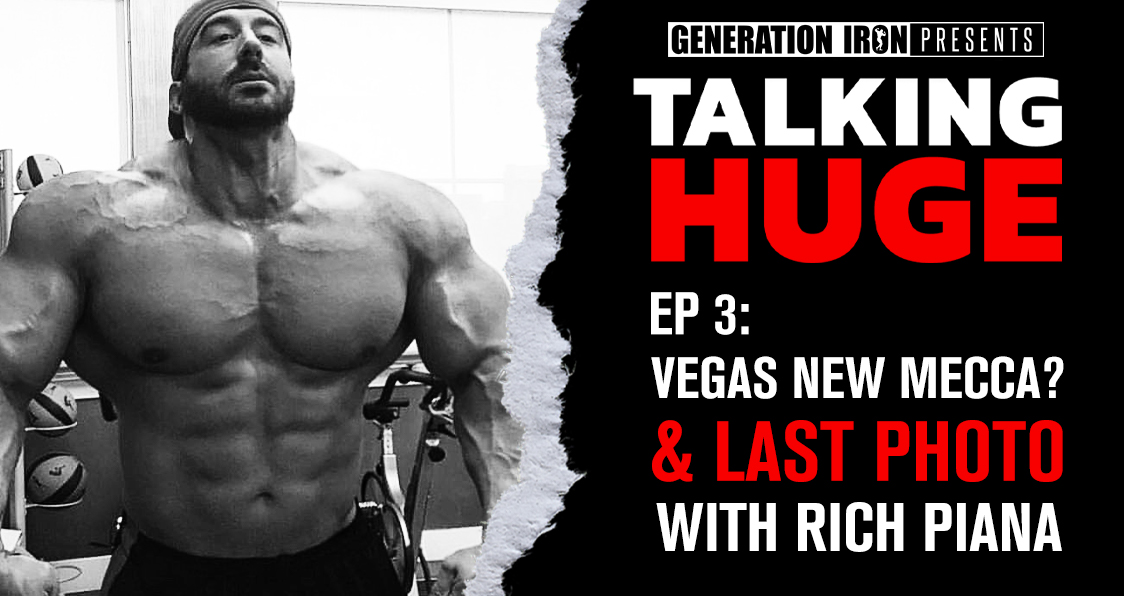
Talking Huge With Craig Golias | EP 3: Vegas New Mecca, Fitting On Plane, & Last Photo With Rich Piana
[embedded content]
Craig Golias talks on how bodybuilders are swarming to Las Vegas, how to not overeat while bulking, and his relationship with the late Rich Piana
Welcome to another episode of Talking Huge – a weekly digital series in which Craig Golias talks in-depth with Vlad Yudin on the latest trending topics in bodybuilding. Raw, honest, and uncut – Craig Golias shares his opinions on all things bodybuilding. In this episode, Craig Golias talks about Las Vegas becoming the new mecca of bodybuilding, his friendship with Rich Piana, how to not overeat while bulking, and his early days as an ectomorph.
While Craig Golias may have only had a short career as a competitive bodybuilder, he still love the sport and lifestyle passionately. During our time talking with Craig during this episode, he also recounts his very first time going to the Mr. Olympia competition as a fan. He also discusses his how much he enjoys going to the expo and meeting fans.
Are bodybuilders flocking to live in Las Vegas?
One of our main points of discussion this week is Las Vegas and how it’s suddenly booming with bodybuilding. It’s no secret that for decades the Mr. Olympia has been held in Las Vegas. Ironically, that has changed over the past two years due to COVID-19 – yet the bodybuilding culture seems to be thriving in Las Vegas regardless.
Craig Golias is one of those bodybuilders. He now lives in Las Vegas and hasn’t looked back. In fact, he despises California cities due to the immense traffic and expensive prices. According to Craig, he’s not alone. Many aspiring and pro bodybuilders are moving to Las Vegas. Not only that – but notable gyms are opening up in the area as well.
This combination of bodybuilding-focused gyms and bodybuilders seems to be early signs of a shift in the bodybuilding landscape. Will Las Vegas soon overshadow Los Angeles as the mecca of bodybuilding? Craig Golias believes so.
Vlad Yudin also discusses with Craig how a similar shift is happening on the east coast. Many bodybuilders and events have been moving to Florida. This was accelerated by the pandemic and the lax laws in the state. But this shift was happening even before COVID-19 consumed the world.
Craig Golias On Overeating And Life As An Ectomorph
The topic of bulking returns this week as Craig Golias gives advice on how to not overeat while trying to put on size. The key of course is to eat clean. But he also suggests that your tactics change depending on your current weight. If you are overweight and want to build muscle – Craig suggests focusing on dieting and cutting weight first. Drop the fat, then return to eating heavily – only this time with clean foods.
Craig Golias, while massive and nearly 300 pounds, was not a man who naturally carried weight during his younger years. In fact, he was skinny as twig. He describes himself as an ectomorph who could eat whatever he wanted without gaining weight.
So of course, when he decided to try and build massive muscle – he overindulged extremely. At first, this combined with training led to mostly muscle growth. But by the time he went from 150 pounds to 225 pounds, the weight gain started going from muscle to fat.
At the time, Craig Golias knew nothing about the protocols and tactics for being a successful bodybuilder. He was just playing it by ear and trying to emulate the physiques he saw in movies and magazines. For future generations – he warns against doing what he did at the start. The sooner you know about building muscle on a clean diet, the sooner you will find the kind of real bodybuilding success you are likely looking for.
Wrap Up
You can watch Craig Golias and Vlad Yudin discuss Las Vegas bodybuilding, Rich Piana, overeating, and how to build muscle as an ectomorph in our latest episode above. Make sure to check out Talking Huge every week on Friday – only on the Generation Iron Fitness Network!
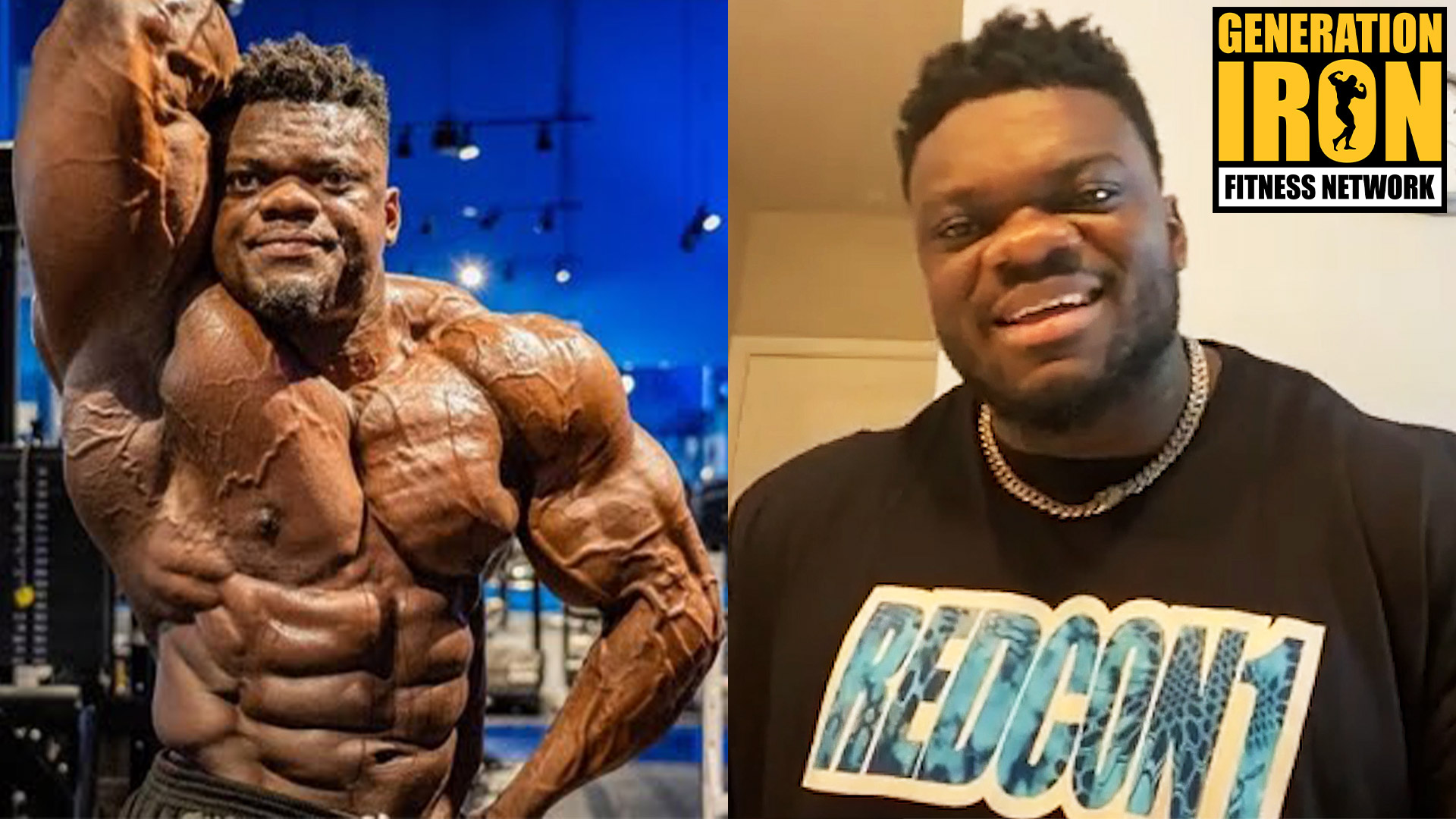
Blessing Awodibu Full Interview | Trash Talk, New York Pro, & The Future Of Bodybuilding
[embedded content]
Watch the full uncut GI Exclusive interview with Blessing Awodibu
Blessing Awodibu blew up on the pro bodybuilding scene in 2020 through to this year. This was due to two reasons. First, his physique updates on social media showcased a threatening package. Second, his personality and trash talk online spawned a rivalry with another up and coming bodybuilder in the spotlight – Nick Walker.
Since then, Blessing has competed in the Indy Pro and the New York Pro. While he didn’t win either of those competitions – his physique shows true promise. He placed third at the Indy Pro and sixth at the New York Pro. Disappointing compared to the hype behind him – but a respectable start for his pro career to be sure.
Over the past few months we’ve released multiple GI Exclusive segments from our interview with Blessing Awodibu. Now we’re releasing the full length interview including topics such as his online hype & trash talk, the New York Pro, and how he plans to transform the future of bodybuilding.
Listen To Our Blessing Awodibu Interview On The Generation Iron Podcast
Our full length interviews are now also in podcast form! Subscribe to the Generation Iron Podcast for candid, full length interviews with the biggest names in bodybuilding, fitness, combat, and strength sports.
Listen to the full Blessing Awodibu interview here:
Blessing on trash talk and his rivalry with Nick Walker
True to character, Blessing embraced the entire rivalry with Nick Walker in the lead up to the New York Pro 2021. He believed that this kind of beef is simply part of the entertainment of bodybuilding. He is doing it because he wants to put on a show. He thinks that the New York Pro would have the “highest pay-per-view streams” than any other IFBB show. He thinks this is solely due to the hype he helped create.
He also thinks that Nick Walker might have taken everything a bit too personally. Blessing believes that athletes understand an unspoken contract as pros – that the trash talk and rivalries are nothing personal. It’s simply the mindset of a confident athlete looking to win.
“I don’t think Nick understands it. He took it too personal, you know?”
Blessing expresses the importance of bodybuilders bringing entertaining personality to the sport.
Blessing Awodibu thinks the sport of bodybuilding has one major problem. It has nothing to do with the physiques or bubble guts. Blessing thinks we have a crisis of personality in bodybuilding. More specifically, he thinks that bodybuilding has stopped being entertaining.
Of course, Blessing is not referring to the actual competitions themselves. He understands that the drama of the Olympia or Arnold Classic or any other major IFBB pro show is still there with the quality of physiques on display. The problem is everything in between. There are not enough personalities, rivalries, and hype building up into the competitions.
Blessing Awodibu is already someone who is making headlines in the industry. Not only due to his massive physique but also due to his outspoken nature leading up to the New York Pro 2021. He’s called out Nick Walker and built anticipation with a temporary rivalry between the two leading up to the show.
Beyond that, Blessing Awodibu, has been making viral content online for years. He’s been dubbed the funniest bodybuilder in the sport. During our conversation, we asked him what other bodybuilders look to be matching him in terms of entertainment and personality. Blessing had a hard time coming up with any names.
That’s the problem. For every Kai Greene or Bradley Martyn, there are dozens of other bodybuilders that simply stay quiet. What makes this most frustrating for Blessing, is that he knows that there are tons of great bodybuilding personalities in the sport. He thinks there is a lot of talented bodybuilders who can create great hype and content. But in Blessing’s opinion – they are being lazy.
Of course, Blessing means this only on the personality or entertainment front. In fact, he points out that these pro bodybuilders are so good at training, dieting, and sculpting their physique – that they don’t make time to entertain the fans.
Wrap Up
Our conversation with Blessing Awodibu lasted just about an hour – so there are many other topics that we can’t discuss in full within this article. That’s why you can check out the full uncut GI Exclusive interview with Blessing above!

How to Lean Bulk – The Ultimate Guide
How to Lean Bulk – The Ultimate Guide
Before we get to to the million-dollar question, let’s talk about “bulking”. Lean bulking is such a misunderstood concept that most people who start a bulk end up gaining a belly. For a few minutes, forget everything you’ve been told about bulking by the bros.
Bulking cycle is a period of time where you eat surplus calories to gain muscle mass and strength. The sad and inevitable part of a bulking program is that an aggressive caloric surplus state will invariably lead you to put on body fat.
In an effective bulking plan, you should be increasing your training intensity and frequency. Adding more load and volume will provide ample stimulation to your muscles and will make sure you’re not adding too much to your fat reserves.
Like all good things, a bulking period has to come to an end. In the “cutting” phase you will cut the fluff from your body by adding HIIT cardio to your training program and by cutting the carbs and fats from your diet.
Pre-Requisites of a Lean Bulk –
Don’t Eat Like It’s The Last Meal of Your Life
Some people think that a bulking diet is synonymous with cheat meals. You can’t and shouldn’t eat anything you can get your hands on. Just like any other bodybuilding program, you’ll have to follow a strict diet plan for a lean and clean bulk.
A Bulk is Not For Everyone
Probably the biggest misconception about bulk is that anyone can do it. If you’re a newbie or don’t have any gains to show, forget lean bulking. The first goal should be to put on quality muscle mass.
You should only consider bulking if your current body fat percentage is at or around 10-12%. If you’re around 15-20% body fat, you’re already too bulky to start a new lean bulking program.
Calculating Your Caloric & Macronutrient Needs For Lean Bulking
Starting a lean bulking program without knowing the exact amount of calories and macronutrients you need is a recipe for disaster. As someone rightly said, “If you fail to plan, you’re planning to fail.”
If you don’t follow a strict diet, you’ll most likely end up stuffing yourself with empty calories and saturated fats. Ask anyone on a bulking schedule about his exact daily calorie goals and they might tell you that the whole point of a bulking program is to put on size without fussing too much about tracking calories.
Designing Your Diet
The first step in designing the bulking diet is to calculate your BMR. BMR (basal metabolic rate) is the amount of energy required by your body while resting in a temperate environment when the digestive system is inactive. Calculating your BMR is equivalent to figuring out how much gas your idle car consumes while parked.
After calculating BMR, it’s time to compute your TDEE (Total daily energy expenditure) with this formula:
TDEE is the exact number of calories your body needs to maintain itself. In a bulking program, you need to add a surplus to put on some muscle mass. Most people make the mistake of adding too many calories to their diet. In a bulking program, you don’t need more than 200-300 calories to be in a healthy and effective surplus state.
Finding Your Daily Macronutrient Needs
While this might feel a little complicated but learning these steps will put you in total control of your body, and you won’t need a dietician ever again to help with your transformations.
Each macronutrient has a certain amount of calories per gram. While fats contain nine calories per gram, protein and carbs contain four calories per gram each. We won’t get into the roles of each macronutrient as it is out of the scope of the article but each macronutrient is indispensable to the success of your lean bulk.
Starting with Protein
Protein is the muscle’s building block and arguably the most important macronutrient when it comes to gaining muscle size. According to some studies, you need 1 gram of protein per pound of bodyweight to put on muscle mass.
After you calculate your daily required calories using TDEE, you need to gauge your daily protein need. 40:30:30 (carbs: protein: fats) is a dependable macronutrient split for bulking. If your total required calories are 2400kcal, you’ll need 960kcal (2400X40%) coming from protein. You need to be eating 240 grams (960/4) of protein every day to put on muscle mass.
Carbs & Fats Come Second
Calculate your required fats the same way. You’ll need 720 calories (2400X30%) and 80 grams (720/9) of fats. Carbs are calculated by adding the required calories from protein and fats and deducting them from the total amount of required calories.
In this case, you’ll need 720kcal [2400-(960+720)] and 180 grams (720/4) of carbohydrates. The next step would be to use an app like MyFitnessPal to design your meal plan as per your macro goals.
Now that you know this system, you never have to consult a nutritionist for designing a diet plan, your welcome.
Three Main Kinds of Bulks
The Relaxed Bulk
The relaxed bulk is probably the most common type of bulk. It doesn’t require any calorie or macronutrient tracking. You eat the usual food (in higher quantities) and gain a decent amount of muscle mass. People also run the risk of gaining a higher amount of fat in the process.
The Lean Bulk
The lean bulk is what most people want to do but end up doing the relaxed bulk because of a lack of knowledge. It is the structured approach to bulking where you track your calories and macronutrients. In the lean bulk, you gain maximum muscle and minimum fat.
The Maintenance Bulk
Maintenance bulk is very similar to lean bulk. The only difference here is that you won’t be eating the surplus 200-300 calories. Eating right around the maintenance level will in theory only make you gain muscle mass and no fat.
Tracking Your Progress
Tracking progress is one of the most overlooked aspects of lean bulking. You need to know the realistic rate of muscle growth to be able to track and compare your progress. Your bulk progress will depend on your training experience.
Training experience can be categorized in a few different ways, with the most popular one developed by Lyle McDonald. His method is based on years of proper training:
Have you ever tried lean bulking? Let us know in the comments below. Also, be sure to follow Generation Iron on Facebook and Twitter.
